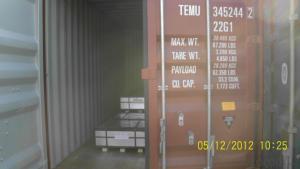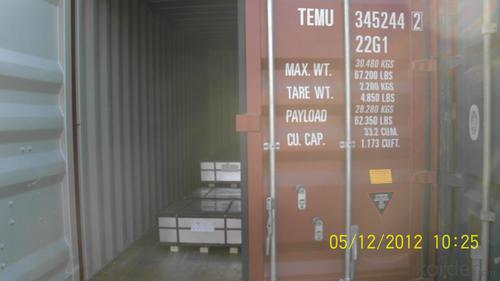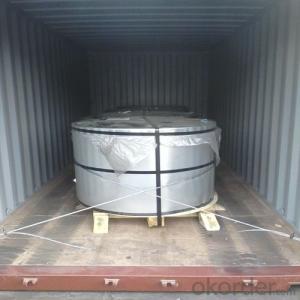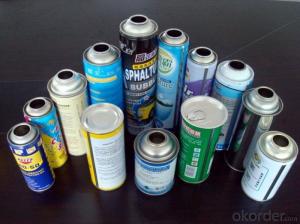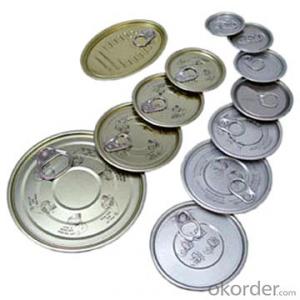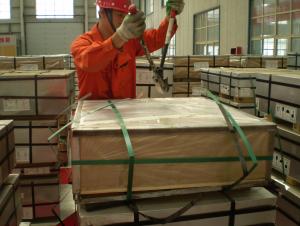High Quality of Tinplate for Shoe Polish Cans
- Loading Port:
- China Main Port
- Payment Terms:
- TT OR LC
- Min Order Qty:
- -
- Supply Capability:
- -
OKorder Service Pledge
OKorder Financial Service
You Might Also Like
Our tin plate (TP) products are made by coating tin using electrolysis on the surface of thin coldrolled steel sheet (black plates), with a thickness of 0.14~0.6 mm. Its shiny surface finish, superb corrosion resistance and formability make tin plates an ideal choice for the food industry and industrial parts producers. Our tin free steel sheet (ECCS) is widely accepted as a more economical substitute for the tin coated steel. Our TP/TFS products are widely used in the production of 3-piece and 2piece (D&I, DRD) cans as well as can lids and bottoms. Our products serve a variety of purposes, including material for steel EOE, toys, and electronic parts.
Our Tinplates Specification:
Standard: ISO 11949 -1995, GB/T2520-2000,JIS G3303,ASTM A623, BS EN 10202
Material: MR,SPCC
Thickness:0.15mm - 0.50mm
Width: 600mm -1150mm
Temper: T1-T5
Annealing: BA & CA
Coil Inner Diameter: 508mm
Weight: 6-10 tons/coil 1~1.7 tons/sheets bundle
Passivation:311
Oil: DOS
Surface: Finish,bright,stone,matte,silver
Packing:
1、For sheets: plastic or waterproof paper, metallic cover and angles, steel strips,wooden pallet.
2、For Coils: plastic or waterproof paper,plastic protect plate,steel strips.
Both Prime and Second Quality Are Available!!!
- Q: What are the different methods of joining tinplate components together?
- There are several methods of joining tinplate components together, including soldering, spot welding, adhesive bonding, and mechanical fastening. Each method has its own advantages and suitability depending on the specific application and desired outcome.
- Q: How do you solve the water stains on the tinplate?
- Feel the basin soil, if the surface is still felt humidity, can pinch the water, then it is necessary to take out the whole plant, breathable, basin soil slightly dry and then put back, half Yin conservation.
- Q: Can tinplate be used for toys and games?
- Yes, tinplate can be used for toys and games. Tinplate is a lightweight and durable material that can be easily shaped and decorated. It is commonly used to make toy cars, trains, tin soldiers, and various other playthings.
- Q: What are the benefits of using tinplate for electrical components?
- Using tinplate for electrical components offers several benefits. Firstly, tinplate is corrosion-resistant, which helps to protect the components from moisture and other environmental factors that could lead to damage or malfunction. Secondly, tinplate has excellent conductivity, ensuring efficient and effective electrical flow within the components. Additionally, tinplate is a lightweight and durable material, making it ideal for use in electrical applications. Furthermore, tinplate is easily recyclable, making it a sustainable choice for manufacturers. Overall, utilizing tinplate for electrical components enhances their performance, longevity, and environmental sustainability.
- Q: What are the advantages of using tinplate for toys and games?
- One advantage of using tinplate for toys and games is its durability. Tinplate is a strong material that can withstand rough play and handling, making it ideal for toys that may be subjected to frequent use and potential impacts. Additionally, tinplate is resistant to corrosion, ensuring that the toys and games made from this material will last longer and maintain their quality. Furthermore, tinplate can be easily shaped and molded into various designs, allowing for the creation of intricate and detailed toys and games. Overall, the use of tinplate in the manufacturing of toys and games offers advantages in terms of durability, longevity, and design flexibility.
- Q: How does tinplate contribute to the preservation of tobacco products?
- Tinplate contributes to the preservation of tobacco products by providing a durable and protective packaging material. It helps to prevent exposure to moisture, light, and oxygen, which can degrade the quality and flavor of tobacco. Additionally, tinplate cans or containers can be sealed tightly to maintain freshness and prevent the entry of external contaminants.
- Q: Can tinplate be used for packaging frozen foods?
- Yes, tinplate can be used for packaging frozen foods. Tinplate is a type of steel coated with a thin layer of tin, which provides protection against corrosion and keeps the food inside safe. It is commonly used in the food industry for various packaging applications, including frozen food containers. Tinplate containers offer good durability, insulation, and can withstand extremely low temperatures, making them suitable for packaging and preserving frozen foods.
- Q: Can tinplate packaging be used for cosmetic products?
- Yes, tinplate packaging can be used for cosmetic products. Tinplate is a popular choice for packaging cosmetics due to its durability, versatility, and ability to protect the products from external factors such as moisture and light. Additionally, tinplate packaging can be easily customized and decorated, allowing for attractive and eye-catching designs to enhance the brand image of cosmetic products.
- Q: How does tinplate perform in terms of insulation properties?
- Tinplate does not perform well in terms of insulation properties as it is a good conductor of heat and electricity.
- Q: How is tinplate affected by different types of food products?
- Tinplate can be affected by different types of food products due to the potential reaction between the metal and certain acidic or alkaline foods. This can result in a metallic taste or discoloration in the food. To prevent such interactions, tinplate is often coated with a layer of enamel or lacquer to provide a protective barrier between the metal and the food.
Send your message to us
High Quality of Tinplate for Shoe Polish Cans
- Loading Port:
- China Main Port
- Payment Terms:
- TT OR LC
- Min Order Qty:
- -
- Supply Capability:
- -
OKorder Service Pledge
OKorder Financial Service
Similar products
Hot products
Hot Searches
Related keywords
